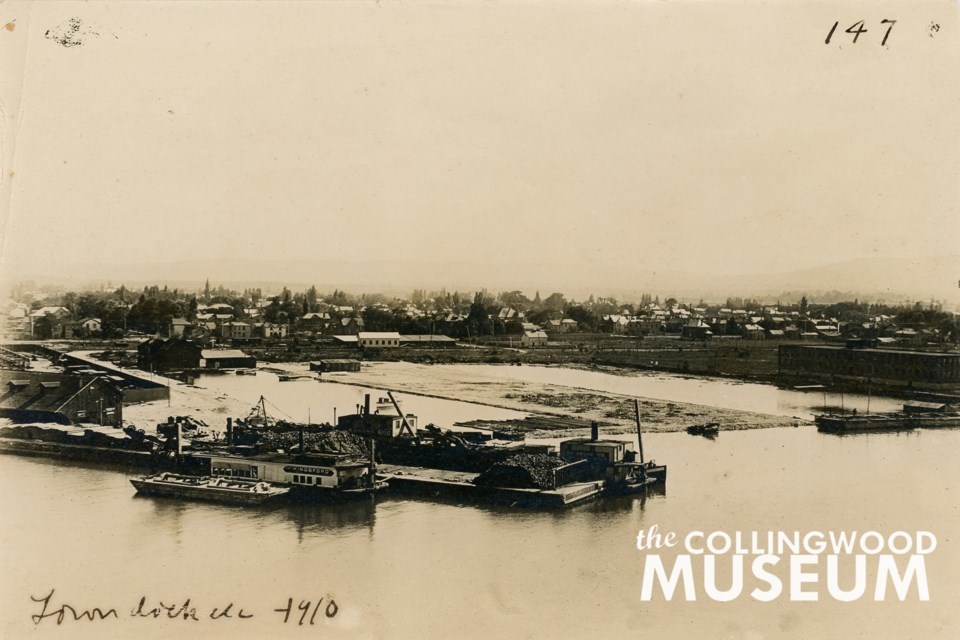After the sad discoveries in and near the Wonch family cabin, both Jenny and Jack were taken into custody and kept first in a Collingwood cell before being transferred to the Barrie Jail on March 9, 1893.
Jack Wonch had no reservations about talking to anyone who would listen and he relayed that Jenny had killed both her mother and her child with an axe handle, made an attempt to burn the remains, then buried them with his help before running away.
Newspapers near and far scrambled to get an account of the events for their readers. Real facts were in short supply, which is evident in many of the reports that were published at the time. Most articles referred to Jenny as a girl of about 16 years of age, which was not the case. She was closer to 40.
In Craigleith, a coroner’s jury found that Jenny Wonch was the person responsible for the deaths, which were ruled to be homicides. It was now up to the court in Barrie to determine legal guilt or innocence and impose a sentence, if any, but it certainly looked like a done deal.
A Northern Advance reporter took a tour of the Barrie Jail in mid-March of 1893 to report on the current conditions of the “Castle." At the time, there were 21 male prisoners housed and five females.
Jack Wonch was described as “a person of medium size, with a dull, rather stupid look on him” while his sister seemed to the writer to be “not a bad looking woman … clean in appearance with dark hair and dark, flashing eyes.”
The Spring Assizes began on March 21, 1893 at the Barrie courthouse, but Justice McMahon deemed the high-profile case not yet ready for trial and put the case off until September.
By the autumn of 1893, the frenzy surrounding the case had cooled off quite a bit. The trial made history, though, as Jenny Wonch testified on her own behalf, a first in Canadian history, it was reported, as the criminal code had recently been altered.
Witnesses described a large and sprawling but mostly close-knit family who kept to themselves.
Sometimes the Wonches quarrelled bitterly, but nothing out of the ordinary. They lived in squalor, but tried valiantly to keep themselves going. It all seems to have fallen apart that winter day in 1893.
All eyes were on Jenny Wonch when she took the witness stand. She testified that Collingwood Police Chief Lewis had visited the shanty about a week before the tragedy and warned her that if conditions didn’t improve in the house, the family would again be separated and she would be returned to the Mercer Reformatory.
Her only crime, she said, was that she had left her aged mother, who was unable to walk, and her toddler daughter alone in the cabin in the care of her disabled brother.
On Feb. 23, during a half-hour period when she was in the forest gathering wood, Jack left the cabin to go to town. When she
returned, Jenny saw smoke curling out from the crevices surrounding the front door.
Jenny Wonch testified that both her mother and child had been badly burned by a fire, but both were still living when she found them. She attempted to tend to their wounds, but they both passed away that evening. When Jack returned, he assisted the panic-stricken Jenny in moving the bodies.
Jack, when put on the stand, denied ever saying Jenny had hit anyone with an axe handle. He testified that he was away from home during the deadly events and only helped move his mother’s body after the fact.
After all of the sensational newspaper reports, and damning evidence and testimony given at both the coroner’s jury trial and the court trial, a most unexpected statement came from Dr. George Aylesworth who had performed a post-mortem on both of the deceased. He found no evidence of violence on either body and supported Jenny’s claim that they had expired due to being burned.
The jury was addressed by Chief Justice Armour on Sept. 13, 1893 and sent out to deliberate. Within an hour, they were back and returned a verdict of not guilty.
Jenny Wonch was immediately freed, and what became of her after this I have not discovered. Jack Wonch was sent to the Asylum in Orillia where he died in 1900, of a sudden heart condition, at age 49 years.
As the two deaths were officially registered by James Wonch on March 2, 1893, months before the trial exonerated his sister, Mary Ann and Maisy Wonch will forever be recorded as having been murdered.
Each week, the Barrie Historical Archive provides BarrieToday readers with a glimpse of the city’s past. This unique column features photos and stories from years gone by and is sure to appeal to the historian in each of us.
